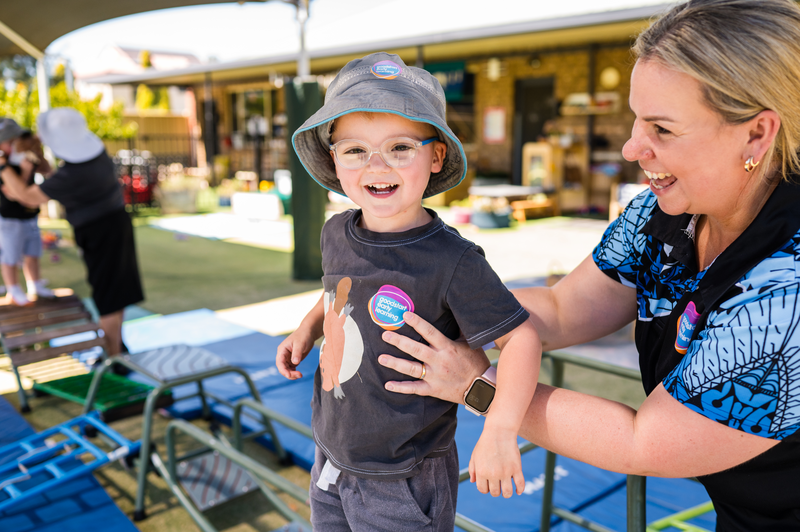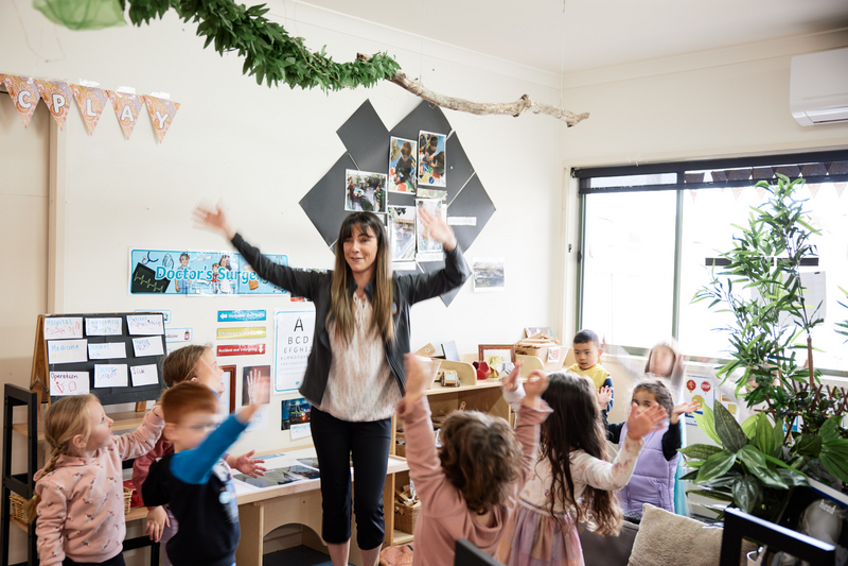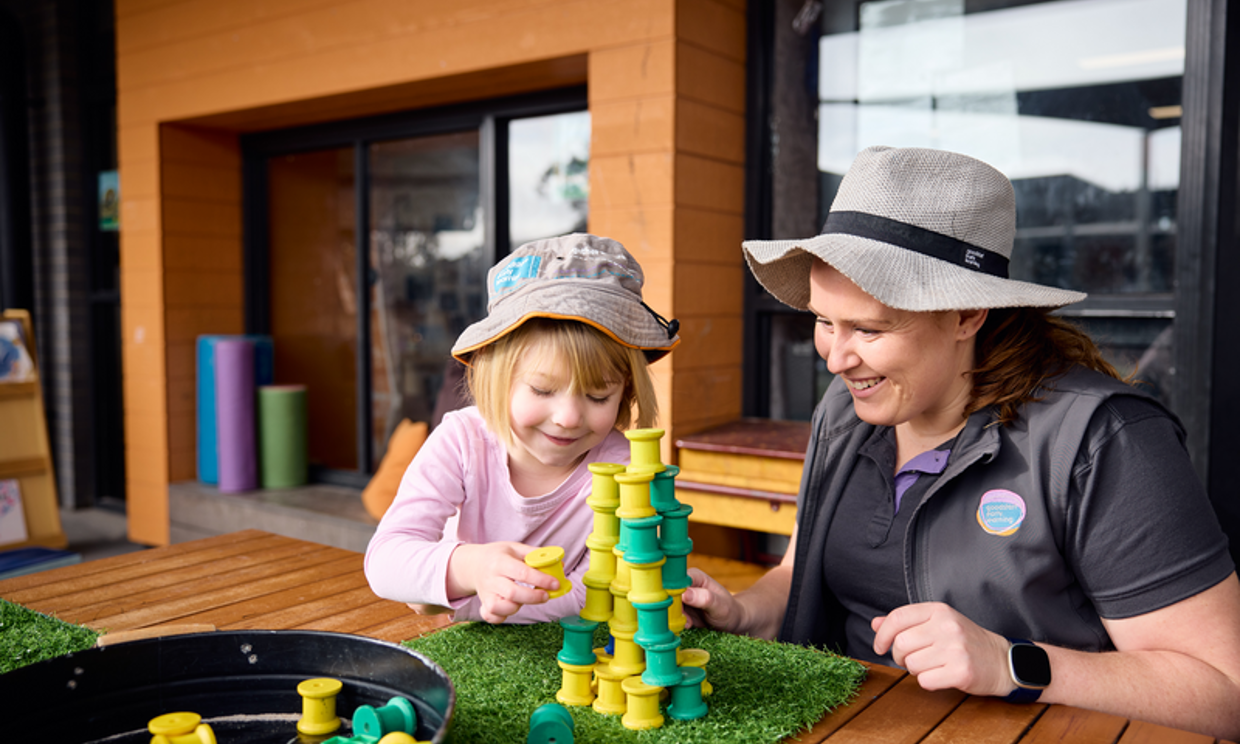Are you looking to enrol your child in an early learning program but don't know where to begin? You are not alone!
We know families have many considerations when making early learning and care arrangements—from location, fees, and hours to learning programs, extracurricular options, and much more. On top of that, there's also an understandable mix of emotions, particularly if this is the first time you're entrusting your child's care and education to others.
But we also know it's worth finding the right child care centre for you and your child because high-quality early learning and care, coupled with a nurturing home environment, makes all the difference to a child's early development and helps prepare them for school and beyond.
At Goodstart, we're committed to providing the highest quality early learning and care in the safest possible environments because we know the significant impact this can have on a child's life. The first five years are the period of the most rapid brain development children will have. In a baby's first year alone, more than one million connections are formed in their brains every second!
Given their rapid development, children need to be immersed in activities and stimuli that feed their hunger for knowledge. So, how do you find a childcare centre with a nurturing, stimulating, safe environment and caring, qualified early learning educators?
In this article from the First Five Years website, you'll find some simple things to look for as you navigate to find that special early learning centre that will be able to provide the high-quality early learning and care for your child that you want.
Quick tips for choosing the right centre
- Understand what is best for your child and your family: think about your family's routine and development.
- Do your research: look for information from various sources before creating a shortlist.
- Visit a centre: The best way to learn about early learning is to visit a centre. You'll get a good sense of how the centre operates and have a chance to ask more questions.
- To ensure the learning program is high-quality and will bring out the best in your child, research how educators integrate learning and development into their programming.
- Find out about extra inclusions: During your tour, ask what learning and extracurricular activities are part of their programs and what extras might be included, like meals or nappies.
- Understand the centre's policies: All centres should have information about their operations, policies, and procedures readily available. Particularly if your child needs extra support or has medical issues like allergies, for example, you should ask to see the relevant information.
What high-quality early learning can look like:
Infants & toddlers

Relationships and interactions
- Educators interact with infants and toddlers at their height and on the floor together. (Indicates respect for the unique communication styles of infants and toddlers.)
- Infants and toddlers seek out their educators and show joy in seeing them. (Indicates suitable attachment between the child and their educator.)
- Some children may eat, while others may sleep, and others may play. (Indicates individual children's routines and rhythms are being respected.)
Play-based learning
- Educators repeat simple games with children and wait for the child to indicate that they are ready to move on to something else. (Infants and toddlers need repetitive and practice play over time to support learning new concepts.)
- Educators sing rhymes, count, or explore body parts like fingers and toes with infants and toddlers during routine meals and nappy changes. (Indicates an understanding that learning takes place during everyday care routines.)
- Educators are playing with single children or tiny groups of children. (Indicates understanding of infant and toddler need for adults to model appropriate skills to support learning and relationship development.)
- Children's learning is displayed at children's height, accompanied by explanations of the learning that has taken place. (This supports very young children in retracing the activities they have engaged in and helps families understand what their children are learning.)
Physical environments
- Equipment and toys are accessible, from low shelves and baskets, for infants and toddlers to self-select. (Indicates a respect for an infant's ability to make choices and demonstrate independence.)
- Highchairs are low to the ground to match the height of low tables for older children. (Indicates the environment is being organised to support and encourage social interactions at mealtimes between all children.)
- Posters, displays, mirrors, etc., are down low at the height of the children. (This indicates that the environment is being organised with the physical size of infants and toddlers as a primary consideration rather than adult perspectives.)
3 to 5-year-olds

Relationships and interactions
- Educators and children are in deep discussions about activities or play; children enthusiastically seek out their educator to share stories, ask for assistance or involve them in play; children and educators are at ease in each other's company. (Indicates reciprocal relationships and positive bonds between educator and children.)
- Children negotiate with each other without conflict; if conflict arises, educators support the children through the issue to find a solution together. (This indicates that the educators have spent time supporting children to work with others.)
- Children are engaging in play with friends in pairs and small groups. (Indicates the educators are working at facilitating positive relationships between children.)
Play-based learning
- There are displays (at child height) of projects that follow children's inquiries about a topic and demonstrate multiple curriculum areas such as math, literacy, or science being used to explore the topic. For example, children may have practised writing and drawing about the topic, making models of things from within the topic, taking photos of group discussions, etc. (Indicates an understanding of holistic learning and using multiple curriculum areas around a topic of interest. Also, it is evidence of the educator's ability to stretch and extend children's initial interest and understanding of a topic.)
- Small children are engaged in various activities inside or outside at once. (Supports children's diverse interest areas for play and exploration and provides more opportunities for social engagement between children.)
- Children move equipment from one section of the room to their play, for example, bringing dolls and cars into the construction area. (Indicates educators support children in extending their thinking and independence to develop more meaningful play.)
Physical environments
- Equipment and resources are available for children to self-select, use and self-manage. (Indicates respect for children's growing sense of independence and abilities and capability to be responsible for their environment.)
- The room has well-resourced and clearly defined areas for different learning experiences. For example, there might be writing, dress-up, or construction areas. Resources and props to add to play, such as cardboard boxes, paint, sticky tape, or material swatches, are available. (This indicates educators' understanding of the growing complexity and imagination in play for older children. This complex child-initiated play requires a broad range of accessible resources to support and fully extend the learning process.)
- Children's belongings, including food, clothing, bags, etc., are easily accessible. (This indicates that the environment has been respectfully organised with children's growing capabilities for independence and autonomy in mind.)


